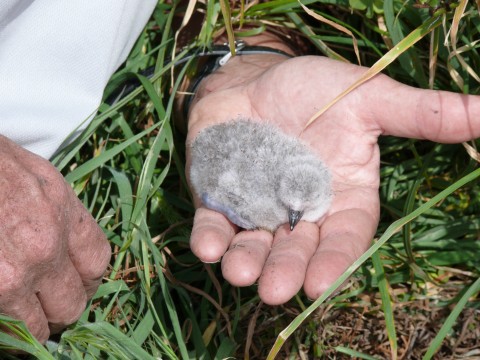Sparrow of a seabird
Seabirds – as a general rule – are rather large. Large wings designed to sail the wind’s currents; a long beak equipped with a salt-extracting unit and a large pair of paddle-like feet are de rigueur in seabirds.
Unlike most seabirds though, the common diving petrel (kuaka) has few of these attributes. It’s fitted out with a pair of stumpy wings and a small sparrow-sized body that makes it look like it has taken a wrong turn. Unlike our soaring albatross, the diving petrel has to flap franticly to keep airborne.
However if you spend enough time watching these nifty little seabirds, you’ll learn that they’re very much home at sea. They can even navigate through air and water almost seamlessly. I have even seen one charge into a huge wave, burst on through to the other side, and just keep on flying.
The courage! The pluck! The sheer lunacy of it! You’ve got to love this foolhardy bird
Unfortunately this bird has been one of the major victims of the recent oil spill in Tauranga. So far, over 500 dead birds have been counted but in reality many more would have sunk without trace. And that’s not to mention the many chicks would have died when their parents failed to return to their nests feed them.
I had the gruesome task of identifying some of the seabirds caught up in the oil spill and one of the three subspecies, the northern diving petrel, repeatedly showed up. Its population sits at around one million birds.
Already they’ve had a century- long battle with rats and they reside only on rat-free islands and stacks, so a large oil spill like this is a huge blow to their population.
So if you’re going to vote for a battler in this year’s Bird of the Year competition cast your vote for this cute plucky oddball – the common diving petrel.

